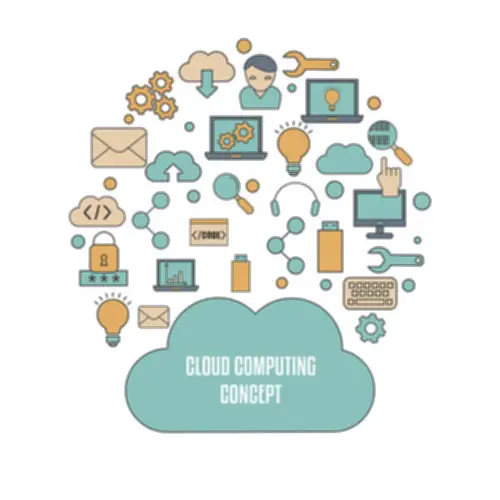Regardless of existing on-premises security models, odds are that cloud suppliers will ship improved security. By leveraging massive storage capacities and finest practices in the cloud, enterprises profit from simple buyer knowledge entry, decrease costs, and a reduced threat of system failure since all information is stored and backed up externally. Hybrid cloud storage is an ideal mix for organizations that should retailer confidential business or customer data on non-public clouds, whereas simultaneously leveraging public cloud storage for much less delicate data. Organizations in various industries can profit from adopting a hybrid cloud approach. Most usually, companies go for hybrid cloud environments as an environment friendly method to handle fluctuating workloads all through the business year. IBM‘s providing within the HIP arena is anchored by its Cloud Pak for Integration, a comprehensive suite designed to deal with the challenges of integration in a multi-cloud world.
How Can A Hybrid Integration Platform Assist Modernize Integration?
With hybrid integration or by working with hybrid cloud providers, you can even leverage the capabilities of the cloud and connect cloud-based purposes and providers to your existing legacy architecture. Integration ensures seamless cooperation between totally different applications and knowledge, especially crucial in IoT, where it bridges IoT gadgets, data, and platforms with conventional IT assets like enterprise apps and legacy information. The approach employs middleware solutions (e.g., ESB, iPaaS, and ETL tools) to sort out IoT connectivity and backend integration. One upshot has been an explosion in the variety of management instruments for seamlessly integrating a quantity of environments by way of load-balancing, compliance-based optimization and price issues.
Additionally, it controls API traffic by way of price limiting, maintaining system integrity. This functionality is pivotal for mixing conventional and fashionable applied sciences inside a HIP, facilitating seamless interoperability, and enhancing organizational agility. One of essentially the most pressing AI hurdles predicted by Gartner in the coming years is the necessity for effective information synchronization throughout hybrid cloud environments. “The cost of modernizing workloads is a consistent problem for CIOs who acknowledge the promise of transferring to the cloud however lack either the funds, people or data to effectively make the transition,” Wurm said.
As businesses proceed to generate large volumes of data, managing it successfully turns into increasingly complicated. Hybrid integration platforms supply highly effective hybrid integration platform instruments for seamless data integration across on-premise and cloud-based functions. With HIPs, organizations could make sense of the data they generate or course of and derive actionable enterprise insights that enhance efficiencies. One of the principle benefits of HIPs is their ability to scale up or down relying on the organization’s requirements. Extremely scalable cloud infrastructure combined with environment friendly useful resource utilization ensures that companies can deal with various workloads without being burdened by extra capacity or insufficient sources.

Steps To Establish A Hybrid Cloud Administration Technique
It also focuses on automating the deployment of these workloads to the best cloud surroundings for a given business need. Managing on-premises, private, and public clouds requires a powerful platform to handle service configurations and application dependencies across every surroundings. With Out it, you’ll face resource silos, deployment delays, and wasted effort, slowing down your operations.
That’s why we work with clients, open source communities, and partners to create platforms that stay open to anything—including what you already have and what’s but to return. Purple Hat offered a platform for Tanobel to embrace the simplicity and pace of cloud-native application improvement whereas preserving existing digital machine workload investments. Contact Parachute today to schedule a complimentary cloud technique session, discover which cloud model will propel your business forward, and get began on building an IT setup that grows with your corporation. Although both methods goal to reinforce your IT infrastructure, there are clear differences between hybrid cloud and multi-cloud.

Alexis serves as Content Material Marketing Web application Manager for industry leading DSPM supplier, BigID. She specializes in serving to tech startups craft and hone their voice— to inform more compelling stories that resonate with numerous audiences. She holds a bachelors diploma in Skilled Writing and a Master’s degree in Advertising Communication from the College of Denver.
What’s Hybrid Cloud Strategy?
- Implement hybrid cloud administration practices to maximise control of distributed environments.
- Hybrid Integration Platforms present companies with robust security features to guard delicate info while also guaranteeing that integrations adjust to industry-specific or regional laws.
- There’s also the very fact a hybrid cloud system is more trendy, which means enterprises get a chance to future-proof their techniques.
- Companies typically use a multicloud technique as part of their hybrid cloud approach, combining an on-premises information heart with a couple of public cloud.
- A newer hybrid cloud architecture approach entails public cloud suppliers offering hybrid cloud platforms that stretch public cloud companies into private knowledge centers.
If you’re utilizing legacy solutions, you’ll probably discover your staff are completing workflows throughout multiple disparate apps that aren’t in dialog with each other. BigID uses advanced AI and next-gen machine studying algorithms to mechanically and accurately scan, identify, and classify cloud information. This data-centric strategy provides higher visibility and understanding of the organization’s cloud property https://www.globalcloudteam.com/, making it easy to prioritize efforts to protect them. The Overall Knowledge Safety Regulation (GDPR) is a set of knowledge protection rules that govern the collection, processing, and storage of personal data inside the European Union (EU). The GDPR applies to any group that processes private information of EU residents, regardless of the place the organization is positioned. Use orchestration instruments to streamline operations and scale back handbook intervention.
Promote collaboration between IT groups and business items to make sure profitable hybrid cloud adoption. In addition, embracing microservice architecture allows builders to pick out the programming language and database that best aligns with the performance the person service will carry out. OpenLegacy helps DevOps by guaranteeing a constant method and enabling automation across hybrid environments. Our integration answer leaves the functions of their current environments — whether or not they exist on-premises or in the cloud — and leverage the combination between them based mostly on user eventualities.

It offers us more management and is usually where we run crucial or sensitive workloads that need to fulfill strict safety or compliance necessities. Centralized control of on-premises and cloud-based sources with a hybrid cloud management software set present value and performance monitoring, safety, reporting and analytics. Hybrid cloud management instruments include CloudBolt, Embotics, Flexera Cloud Management Platform, IBM Turbonomic, Morpheus Information, Nutanix Cloud Supervisor Price Governance (formerly Beam) and Scalr. Explore and check completely different features inside your environment to choose on the hybrid cloud management device that fits your group’s specific hybrid architecture wants. The private cloud element sometimes uses on-premises structure, both in an organization’s local data heart or a separate physical infrastructure provided by a third party, similar to Azure Stack.
This usually happens when there’s a sudden spike in demand for a non-public cloud utility — with hybrid cloud computing, organizations can rely on additional public cloud capability to accommodate the increasing demand. From design to deployment, HIPs provide highly effective capabilities and sources to automate workflows, streamline application management, and speed up time to market. Hybrid integration platforms make software growth and app growth a lot easier.
The fantastic factor about hybrid clouds is that the computing power of public clouds is out there to leverage, as and when wanted. Most corporations within the financial trade depend on private clouds to course of trade orders and retailer confidential or delicate buyer information and mission-critical knowledge. With the rise of DevOps and agile project administration, organizations right now are likely to favor breaking down the project into smaller, extra simply manageable items. Somewhat than creating entire techniques for various enterprise capabilities, builders can now leverage microservices and microservice-based APIs to develop and deploy digital companies more shortly and efficiently. One thing to notice here is that not all companies that depend on each non-public and public clouds have a hybrid cloud. A hybrid cloud implies a sure degree of workload portability, orchestration, and administration integration across these environments to offer a versatile infrastructure for an organization’s software.

